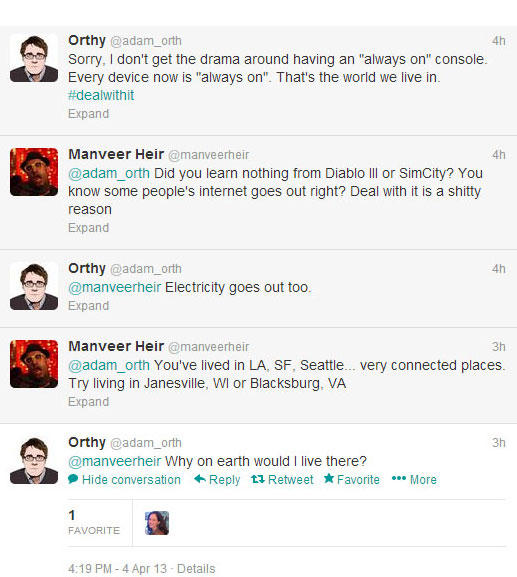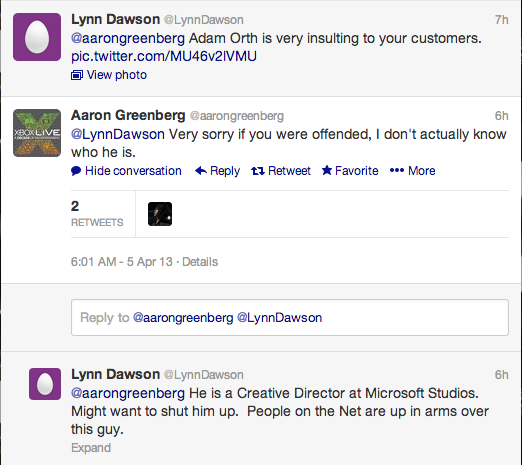Syobon Action (しょぼんのアクション Shobon no Akushon?), also known as Cat Mario or Neko Mario, is a 2D Japanese platform freeware video game, released in February 2007, that is known for its high level of difficulty. The game contains elements that parody Super Mario Bros. for the Nintendo Entertainment System. The player controls a cat-like character, through a side-scroller, similar to Super Mario Bros. The game consists of four levels, all concealed with traps designed to trick the player (such as hidden blocks, ‘power-ups’ and spikes). These traps are scattered around the level, and are usually activated when the player is about to hit them, making the game difficult to complete. Some designers have commented on how the game requires the player to think logically through trial-and-error in order to complete the game.
Syobon Action (Cat Mario)
Actresses Without Teeth
About
Actresses Without Teeth is a single topic blog which features photoshopped images of Hollywood actresses without any teeth, in a similar vein to the photoshop meme Celebrities Without Eyebrows.
Origin
The “Actresses Without Teeth” Tumblr[1] blog was launched on March 26th, 2013, with the first post featuring a photoshopped picture of actress Julia Roberts from the 2009 romantic spy film Duplicity without her upper teeth (shown below).[2] Within eight days, the post received over 400 notes.
Precursor
The humorous concept of masking a specific facial feature in celebrity photos was introduced through the Tumblr blog Celebrities Without Eyebrows[10] in December 2009. The earliest known photoshopped instance of a teeth-less celebrity photo was submitted two years later on December 22nd, 2011 to the /r/WTF[6] subreddit, featuring actor Arnold Schwarzenegger’s yelling scene from the 1990 comedy film Kindergarten Cop (shown below). Prior to being archived, the post received over 2,100 up votes and 80 comments.
Spread
The same day the blog was launched, an Instagram feed was created which reblogged each post, receiving over 6,900 followers in eight days. On March 27th, 2013, the blog was highlighted on several Internet news sites, including BuzzFeed,[5] Laughing Squid[7] and Mashable.[8] On the following day, the Internet news blog UpRoxx[9] published a slideshow of notable examples from the series. On March 29th, 2013, Redditor obie22 submitted an image combining four examples from the Actresses Without Teeth blog to the /r/funny[4] subreddit, where it received more than 23,800 up votes and 730 comments in the following five days.
Notable Examples
Derivative: Actresses Without Lips
On March 29th, 2013, Redditor relationsheep submitted a photo collage of several lipless actresses to the /r/funny[3] subreddit (shown below). Within five days, the post gained upwards of 1,400 up votes and 65 comments.
Search Interest
External References
[1]Tumblr – Actresses Without Teeth
[2]Tumblr – Julia Roberts Without Teeth
[3]Reddit – I see your celebrities without teeth and raise you celebrities without lips!
[4]Reddit – Celebrities Without Teeth
[5]BuzzFeed – Actresses Without Teeth Is The Most Horrifying And Hilarious Thing You’ll See Today
[6]Reddit – Arnold Without Teeth
[7]Laughing Squid – Actresses Without Teeth
[8]Mashable – Your Newest Nightmare
[9]UpRoxx – Actresses Without Teeth Is Here To Meet Your Weekly Nightmare Fuel Quota
[10]Tumblr – Celebrities Without Eyebrows
Superheroes
About
A Superhero is a character in fiction possessing supernatural or extraordinary powers who serves the public and protects the peace. The most common powers a superhero can possess are flying, super strength, power of the elements, or enhanced senses. Most superheroes have bases and battle supervillains in the name of justice.
Origins
The first superhero as we know them is Superman. Superman helped catapult DC Comics and superheroes into the mainstream and was later joined by other heroes Batman,Wonder Woman,Green Lantern,The Flash and others. Another company named Marvel, back then called Timely, grew in popularity with characters such as Spiderman and Captain America.
Spread
Comics became more mainstream during World War II, likely because people wanted escapism into simple Good vs Evil stories, in which the heroes faced certain victory over the Axis. Comics and their heroes left the mainstream past WWII, and comics slipped into nerd culture for a very long time. During the late 70s, the Superman film painted superheroes in a more serious light and catapulted these characters to the big screen. These days, superhero films often have some of the highest yields.[1]
External References
[1]Box Office Mojo – 2012 WORLDWIDEGROSSES
I'm Spartacus!
About
“I’m Spartacus!” is memorable catchphrase taken from 1960 American historical epic Spartacus, directed by Stanley Kubrick. The phrase has became a piece pop culture, being referenced in a dozen TV show, often using the phrase to deceive an opponent of one’s identity.
Origin
During final scene of the historical epic Spartacus (shown below), before titillate character was going to be crucified, each slave begins to stand up one by one and exclaim ’I’m Spartacus!"
Spread
[researching]
Search Interest
Toilet Papering
About
Toilet papering is the act of covering an object, such as a house or another structure with toilet paper. This is typically done by throwing numerous toilet paper rolls in such a way that they unroll in mid-air and thus fall on the targeted object in multiple streams.
Legal Status
In some states in the United States, such as California and Virginia, toilet papering is considered an act of mischief orvandalism. Yet in some states, such as Texas and Minnesota, it is legal and cannot be fined. However, if property damage occurs in Texas due to the toilet papering, the vandalism can be considered a crime of theft depending on the value of the damage.
Oscar The Grouch
About
Oscar the Grouch is a Muppet character on the television program Sesame Street. He has a green body (during the first season he was orange), has no visible nose, and lives in a trash can. His favorite thing in life is trash, as evidenced by the song “I Love Trash”. A running theme is his compulsive hoarding of seemingly useless items. “The Grouch” aptly describes his misanthropic interaction with the other characters, but also refers to his species. His birthday, as noted by Sesame Workshop, is on June 1. The character is performed by Caroll Spinney, and has been performed by him since the show’s first episode.
Spread
This show has been on air for about 30 years, and children of all ages still watch it on TV today.
Berlin Wall
About
The Berlin Wall was a barrier constructed by the German Democratic Republic (GDR, East Germany) starting on 13 August 1961, that completely cut off (by land) West Berlin from surrounding East Germany and from East Berlin.[1]
The Fall
The fall of the Berlin Wall happened nearly as suddenly as its rise. There had been signs that the Communist bloc was weakening, but the East German Communist leaders insisted that East Germany just needed a moderate change rather than a drastic revolution. East German citizens did not agree.[2]
External Links
[1]Wikipedia – Berlin Wall
[2]About.com – The Rise and Fall of the Berlin Wall
Slacktivism
About
Slacktivism, a portmanteau of slacker and activism, is often used with a negative connotation online to describe internet users who will participate in small methods of supporting or protesting a cause that often require little to no effort.
Origin
The term Slacktivism was coined for a 1995 seminar series given by Fred Clark and Dwight Ozard at that year’s Cornerstone Festival, a Christian arts and music gathering, held in Illinois.[1] The seminars focused on the positive ways young people were making changes in the world, juxtaposed against the idea that most teenagers at the time were lazy and unconcerned with working towards a greater good. Clark noted that they chose to use filmmaker Richard Linklater’s positive interpretation of the word “slacker,” meaning people who choose not to waste their time on things that have “nothing to do with who they are.”[2]
Spread
In February 2001, Newsday[3] reported about an email petition that had been circulating for six years, raising awareness about government cutbacks for PBS, National Public Radio and art programs in general by asking people to forward the message to everyone they knew, hoping that after a large amount of signatures had been amassed, the email would get back to the students who would forward it to the government. However, the school shut down the students’ email addresses soon after the email began circulating due to the strain on their mail servers. The Newsday article noted this circulated email, and others like it that flooded the web in the 1990s and early 2000s[4], were an example of meaningless slacktivism, despite their good intentions.
Many of these viral emails were archived on hoax-busting Snopes, whose owner Barbara Mikkelson explained slacktivism as “the desire people have to do something good without getting out of their chair” to the New York Times[5] in May 2002.
Slacktivism was first added to Urban Dictionary[11] in October 2003, relating the act to signing email petitions. This definition was chosen as the March 28th, 2008 Urban Word of the Day. In June 2008, PR Watch[12] offered an offline definition of the practice, comparing forwarding emails to buying rubber bracelets and magnetic car ribbons for causes. Later that year, slacktivism was discussed on NPR[13] for the first time.
Throughout 2009, arguments for and against slacktivism appeared on The Sydney Morning Herald[14], The Globe and Mail[15], Foreign Policy Net.Effect[16], Social Citizens[17] and the Bayer Center for Nonprofit Management.[18] While the activities often associated with slacktivism do not appear to do anything, the positive arguments asserted that word of mouth played a role in why people actually participate in these online activities, which may result in someone hearing about or participating in a cause they may not have interacted with at first, on and offline. The offline effects of online activism were studied by Henrik Serup Christensen in a paper for the internet culture journal First Monday[19] in February 2011. His research concluded that while there was no strong correlation between online and offline participation, online activities characterized as slacktivism had no negative effect on a person’s habits.
Notable Examples
Bra Status Updates
In January 2010, Slacktivism was associated with Bra Status Updates, an online survey game that suggested women update their Facebook status with the color of the bra they were wearing to spread breast cancer awareness. After the trend went viral on Facebook, sites including TrendHunter[6], marketing group MAI Strategies[7], Sociology Lens[8] Newsweek[9] and Jezebel[10] all confirmed that this influx of Facebook status updates did not positively contribute to breast cancer research in any way.
Facebook Cartoon Profile Picture Week
In November 2010, a Facebook user named Dheepak Krishnamurthy created an event page for Cartoon Character Profile Picture Week, asking other users to change their Facebook photos to a cartoon character for a a week for fun. As it spread to the media in early December, the message got misconstrued as an anti-child abuse campaign. The act was criticized by bloggers who saw these profile photo changes as quickly fleeting moments of activism.[20] The profile photo campaign also led Psychology Today[21] to analyze the habits of Slacktivists, noting that people participating in these online campaigns will feel like they have done their part already, leading to causes receiving less donations or volunteers than they would have otherwise.
Kony 2012
In February 2012, the nonprofit organization Invisible Children launched the campaign Kony 2012 to raise awareness about the Ugandan guerrilla leader Joseph Kony for his role as head of the Lord’s Resistance Army, which was notorious for kidnapping children, making females become sex slaves and males become soldiers. The 30-minute video aimed at arresting Kony by the end of 2012 and was followed by instructions on how to support the cause by spreading the video and donating to Invisible Children.
Within 16 days, the first version of the video received more than 7 million views. After it was uploaded to YouTube on March 5th, the video saw more than 43 million views within 72 hours, later becoming marked as the fastest growing viral video of all time. In late February and early March, several hashtags relating to the video began to globally trend on Twitter. The video also instructed viewers to launch real-life protests in an event called Cover The Night, scheduled for April 20th, 2012. Across the globe, these protests fell flat including in Australia, where 25 out of nearly 19,000 Facebook attendees showed up for an event in downtown Sydney. Additionally, many observers online noted that support had dwindled, as no Kony-related hashtags were trending on Twitter.
#ThatAwkwardMoment when #Kony2012 isn’t trending on the day the magic is to happened.. Kind of disappointed, I haven’t even see a poster.
— Bob Fite (@BobFiteSup) April 20, 2012
Following the release of a second video in October, approximately 3000 youths and college students out of 11,000 registrants attended a rally on the White House lawn organized by Invisible Children. As of April 2013, Kony has not been captured.
Red Equal Sign
On March 25th, 2013, the Human Rights Campaign urged their Facebook followers to change their profile picture to a Red Equal Sign the following day, to show support for same-sex marriage as the United States Supreme Court began to deliberate on its legality. In less than 24 hours, the post accrued nearly 17,000 likes and more than 60,000 shares. Within hours, dozens of celebrities on Facebook including George Takei and at least 13 United States Congress members all changed their photos, with many people and corporate pages across the site using variations on the image to reflect their personal interests or brand, respectively.
Four days later, Facebook revealed that there was a 120% increase in profile photo changes that day, with more than 2.7 million people changing their pictures. Despite this, the profile photos saw some criticism across social networks[22] from people who saw the support as an empty gesture that would not enact meaningful change.
Keep up the red equal sign postings, I heard the Supreme Court justices are going through and counting all the profile pictures right now.
— Shayn Fernandez (@Shaynislegend) March 27, 2013
Search Interest
External References
[1]Patheos – Slacktivist: Etymology
[2]Wikipedia – Slacker (film): Impact
[3]Newsday – On the Net, "Slacktivism’ / Do-gooders flood in-boxes
[4]Hoax-Slayer – Are Email Petitions Useful?
[5]New York Times – They Weren’t Careful What They Hoped For
[6]TrendHunter – Breast Cancer Slacktivism
[7]MAI Strategies – Facebook Memes: Slacktivism or Social Movement?
[8]Sociology Lens – facebook slacktivism: some perspective
[9]The Daily Beast – From Newsweek: What Color Is Your Bra? Facebook’s Pointless Underwear Protest.
[10]Jezebel – Thanks For Sharing, But Your Bra Color Isn’t Going To Cure Cancer
[11]Urban Dictionary – Slacktivism
[12]PR Watch – Corporate-Sponsored “Slacktivism”: Bigger and More Dangerous than the Urban Dictionary Realizes
[13]NPR– Slaktivists Are The New Activists
fn14. Sydney Morning Herald – Slacktivism: Can social media actually cause social change?
[15]Globe and Mail – A slacktivist and his crackberry are seldom parted
[16]Foreign Policy Net.Effect – The brave new world of slacktivism
[17]Social Citizens – MILLENNIALACTIVISM: IS IT ACTIVISM 2.0 OR SLACKTIVISM?
[18]Bayer Center – In Defense of Slacktivism
[19]First Monday – Political activities on the Internet: Slacktivism or political participation by other means?
[20]Random Acts of Data – Slacktivism or Why I Hate Facebook Profile Memes
[21]Psychology Today – Are you a Slacktivist?
[22]International Business Times – The Pink Equal Sign Facebook Campaign: Powerful Solidarity Or Empty Slacktivism?
Yu Darvish's Near Perfect Game
Note: Work in Progress. I would really appreciate some help. This is being labeled as an event.

On April 2nd, 2013, Texas Rangers starting pitcher, Yu Darvish blew a perfect game with two outs in the bottom of the ninth inning against the Houston Astros. The perfect game was ruined when Astros shortstop, Marwin Gonzalez hit a first pitch base hit that went past Darvish’s legs and into center field after Darvish pitched 111 pitches and took down 26 consecutive batters including 14 strikeouts in a 7-0 Rangers victory. Darvish is only the 11th pitcher in MLB history to blow a perfect game with one out left.
Reactions
When the game ended, sites such as MLB Memes erupted with content involving the blown perfect game. Some memes that were used to describe the moment included High Expectations Father and X And It’s Gone. Other posts focused on Marwin Gonzalez.



Marwin Gonzalez Wikipedia Hack

Moments after the game ended, Marwin Gonzalez’s Wikipedia page was vadelized by Rangers fans. Some examples included calling Gonzalez “ugly face,” saying that he “bats while going to the toilet,” and reporting that he was killed by an angry mob of Rangers fans. Astros fans came back and stated that Darvish committed harikari after giving up the hit. These changes were deleted by Wikipedia although the statement that Gonzalez’s new nickname was “Game Breaker” stayed for a while, but was eventually deleted as well.
Twitter Trends (WIP)
The Bleacher Report has posted Twitter messages from various reporters when it comes to the game.
http://bleacherreport.com/articles/1590922-twitter-reacts-as-yu-darvish-misses-perfect-game-by-1-out-vs-houston-astros
Crowdfunding
About
Crowdfunding (also spelled crowd funding) is an Internet neologism referring to the practice of raising capital for a project idea through donations from a grassroots network of individuals on the Internet.
Origin
The earliest known instance of an online grassroots fundraiser dates back to 1997 when American fans of the British rock group Marillion independently funded and organized an entire U.S. concert tour through an Internet-based campaign, raising over $60,000. A fe years later in 2000, the first music-focused crowdfunding platform ArtistShare was launched. Early examples of crowdfunding campaigns also sprang up in Japan with the group Electric Eel Shock raising £10,000 from 100 fans in exchange for lifetime guestlist privilege, becoming one of the first unsigned acts to fund their recording albums and concert shows.
Etymology
The “crowdfunding” business model is believed to have originated from the broader concept of crowdsourcing, which describes the process of accomplishing a set goal through contributions from a large group of people on the Internet, rather than from traditional employees through centralized efforts. Meanwhile, the term “crowdfunding” was coined by Michael Sullivan in August 2006 with the launch of fundavlog, an incubator project for emerging video blogs and project proposals.
Many things are important factors, but funding from the ‘crowd’ is the base of which all else depends on and is built on. So, Crowdfunding is an accurate term to help me explain this core element of fundavlog.
Spread
That same year in 2006, general fundraising site Pledgie and music crowdfunding community Sellaband were launched. Throughout the late 2000s, several other crowdfunding platforms were established, most notably IndieGoGo in 2008, Kickstarter and Fundly in 2009, GoFundMe, Appsplit and Microventures in 2010. Following the resounding success of Kickstarter and IndieGogo, similar platforms for DIY fundraisers continued to emerge, as many as 450 unique platforms by mid-2012.
Notable Examples
There are two well-known models for crowdfunding platforms: All or Nothing, which allows the entrepreneur to collect the pledged donation only if the goal has been met, and Keep it All, which allows the transfer of fund regardless of the outcome or let the entrepreneur decide whether to collect or refund. The third but less known model is Bounty, which assigns the collected fund to anyone who completes the project first.
Kickstarter
Kickstarter is an online crowdfunding website that facilitates grassroots fundraisers for a wide variety of creative projects, ranging from indie films, music and print publications to journalism, video games and food-related projects. It is considered the most well-known and highest performing crowdfunding platforms on the Web.
Indiegogo
Indiegogo is an international crowdfunding website that provides a service similar to Kickstarter, however, with significantly less limitations on eligibility of applicants and immediate disbursement of the donations through PayPal accounts and credit card payment. Its most successful campaigns include “Let’s Give ”http://knowyourmeme.com/memes/events/bus-monitor-bullying-video">Karen the bus monitor H Klein A Vacation" ($703,833), “Stick-N-Find” ($861,165), “Bug-A-Salt” ($577,546) and “Let’s Build a Goddamn Tesla Museum” ($1.3 million).
Search Interest
External References
[1]Wikipedia – Crowdfunding
[2]Wikipedia – Comparison of Crowd Funding Services
[3]Triple Pundit – Top 10 Crowdfunding Sites
[4]Comaround – What is Crowdfunding
Attractive Convict
About
Attractive Convict is an advice animal based on a mugshot of a young woman with captions word playing on her beauty and criminal background, in a similar vein to the advice animal character Ridiculously Photogenic Guy. Prior to becoming an advice animal, the photograph was featured in “sexy mugshot” compilation posts on various websites.
Origin
On July 25th, 2010, Florida resident Meagan Renea McCullough was arrested for driving under the influence. Her mugshot (shown below, left) and arrest information were subsequently uploaded to the arrest record database Arrests.org.[3] On August 9th, 2012, the photograph was included in a compilation of mugshots featuring attractive women on the men’s interest blog The Chive[4] (shown below, right).
On August 13th, the pictures were posted on the Japanese news website Daily News Agency.[7] On August 16th, a “sexy mugshots” gallery was submitted to the /r/pics[6] subreddit, which contained the McCullough picture. On August 26th, the Japanese pop culture blog RocketNews[8] reported that the photographs had been posted on the popular imageboard 2chan. On April 3rd, 2013, Redditor vestra submitted McCullough’s mugshot with the caption “Wanted / In 50 states” (shown below) to the /r/AdviceAnimals subreddit.[1] Within 48 hours, the post received over 8,800 up votes and 550 comments.
Spread
As of early April 2013, the “Attractive Convict” Quickmeme page hosts at least 230 instances of the series.
The same day, Redditor squirrelbo1 submitted an image macro with the caption “Can I have her / cell number” (shown below, left) to the /r/AdviceAnimals subreddit.[5] Within 24 hours, the post gained more than 18,000 up votes and 700 comments. Also on April 3rd, 2013, Redditor Skepstar posted an image macro with the caption “I guess it’s true / looks do kill” to the /r/AdviceAnimals subreddit,[9] accumulating upwards of 5,900 up votes and 175 comments. On April 4th, the viral content site BuzzFeed[2] published a compilation of notable examples from the series.
Notable Examples
As of early April 2013, the “Attractive Convict” Quickmeme page hosts at least 230 instances of the series.
Search Interest
Not available.
External References
[1]Reddit – Attractive Convict
[2]BuzzFeed – Best of Ridiculously Photogenic Convict Meme
[3]Arrests.org – Meagan Mccullough
[4]The Chive – Who knew mugshots could be so attractive
[5]Reddit – For those of you that know Attractive Convict
[6]Reddit – Sexy Mugshots
[7]Daily News Agency – The Cutest Mugshots Ever
[8]Rocketnews24 – Too Cute For Jail?
[9]Reddit – Attractive convict really did it this time
[10]Quickmeme – Attractive Convict
Arrested Development
(work in progress)
About
Arrested Development[1] is an American television sitcom that began airing on the Fox Network in 2003. Despite it’s positive critical acclaim and cult-like fan following, the show was cancelled in 2006 after three seasons. In 2011, Netflix agreed to release an additional fifteen episodes to be exclusively distributed via their streaming service, which will premiere in May 2013.
History
The show was driven by an idea of director and producer Ron Howard[3], who wanted to create a comedy series filmed with one camera in the style a reality television with an elaborate, over the top comedy script.[4] Howard and a group of producers met with two writers, including Mitchell Hurwitz[2] who suggested a family with a “riches to rags” story, in light of the 2001 Enron Scandal.[5] He was quickly chosen to write a pilot script, which was submitted in January 2003 and filmed that March. The pilot details the events of a party in which the protagonist Michael Bluth is charged with piecing his family’s company back together after his father, George Bluth Sr., is arrested for using company money for his personal gain. It premiered on Fox on November 2nd, 2003 to 7.98 million viewers.
Reception
Accolades
Fandom
Impact
Catchphrases
I’ve Made a Huge Mistake
Tobias Fünke’s Blanket
Search Interest
External References
[1]Wikipedia – Arrested Development
[2]Wikipedia – Mitchell Hurwitz
[3]Wikipedia – Ron Howard
[4]The O.P. – Interview: Katie O’Connell
[5]Wikipedia – Enron Scandal
Twitter the Comic
About
Twitter the Comic[1] is a Tumblr-based webcomic which translates funny, witty or absurd tweets into 4-panel comic strips. Many of the tweets are from accounts that are considered part of Weird Twitter.
Origin
On November 19th, 2012 artist Mike Rosenthal posted a series of five comic strips to his Tumblr blog the tumblr blog. The average post gets thousands of likes and/or reblogs.
Spread
Twitter the Comic has received attention on Reddit, BuzzFeed, and from Whil Wheaton via his personal tumblr. To date, the most popular post has received over 20,000 likes/reblogs on tumblr.
Other webcomic and comic creators have participated in Twitter the Comic and have been invited to create their own strips for the blog.
Related Works
Mike also created the webcomic “Our New Electrical Morals” which is now a cartoon on Cartoon Hangover.
Notable Examples
Search Interest
External References
[1]Tumblr – Twitter the Comic
Operation North Korea
Background
In early March 2013, Republic of Korea and the United States began their annual joint field training exercises known as Key Resolve and Foal Eagle. Throughout the month, the tension between the two Koreas quickly escalated as both sides continued to deploy heavy military forces along the maritime border and hackers from both Koreas allegedly targeted each others’ Internet infrastructures and servers with malware and DDoS attacks. On March 29th, North Korea’s state-run news agency issued a statement that its leader Kim Jong Un approved military plans for striking American and South Korean targets.
Anonymous Korea
On March 30th, 2013, a contingent of Anonymous-affiliated hackers calling themselves AnonymousKorea[1] claimed via Twitter that it had launched a DDoS attack against North Korea’s official websites and brought down at least five of them, including the North Korean airline Air Koryo and numerous other state news and propaganda websites.
#OpnorthKorea#Tangodownairkoryo.com.kpnaenara.com.kpkorea-dpr.comfriend.com.kpuriminzokkiri.com
— Anonymous_Korea (@Anonsj) March 30, 2013
Notable Developments
@Anonymous_Korea’s #OpNorthKorea tweets were instantly picked up by several Anonymous-affiliated news outlets[4] on Twitter, including @Data_Overflow, @AnonOpsKorea, @root, @iSPAINonymous @Generati0n_anon, @TheAnonOne and @AnonymousNull. That same day on March 30th, North Korea Tech[3] and Business Insider[2] reported on #OpNorthKorea, both suggesting that the latest DDoS attack may have been tied to the hostile threat of war that had been issued by North Korea a few hours before.
On April 2nd, Pastebin user DBLUE uploaded a brief communique[7] explaining the background of the attack and a list of demands urging Kim Jong Un to resign as the leader and implement reforms towards democracy. The Pastebin document also included some details of two Chinese nationals and three Korean nationals, which it claimed to be part of 15,000 user records that the hackers obtained from the Chinese-hosted North Korean news site Uriminzokkiri.
We demand:
- N.K. government to stop making nukes and nuke-threats
- Kim Jong-un to resign
- it’s time to install a free direct democracy in North Korea
- uncensored internet access for all the citizens!
To Kim Jong-un:
So you feel the need to create large nukes and threaten half the world with them?
So you’re into demonstrations of power?, here is ours:
- We are inside your local intranets (Kwangmyong and others)
- We are inside your mailservers
- We are inside your webservers
However, the group’s claim that it had sucessfully breached North Korea’s local intranets remain unsubstantiated and no official statements have been issued from the North. In the following days, the alleged Pastebin leak was covered by Cyber War News[5], North Korea Tech[6] and The Daily Dot[8], reporting that more attacks have been supposedly scheduled to take place on April 19th and June 25th.
Search Interest
[not yet available]
External References
[1]Twitter – @Anonymous_Korea’s Tweet
[2]Business Insider – North Korean State Websites Down After Reports Of Cyber Attacks
[3]North Korea Tech – #OpNorthKorea brings more attacks on DPRK websites
[4]Twitter – @Data_Overflow’s Tweet
[5]Cyber War News – Anonymous Attacks North Korea for #OpNorthKorea
[6]North Korea Tech – Hackers claim 15,000 Uriminzokkiri user records
[7]Pastebin – Anonymous hits N. Korea
[8]Daily Dot – Anonymous attacks North Korea, demands Kim Jong-un step down
[9]Mashable – Anonymous Hacks North Korea’s Twitter, Flickr Pages
The Gwiyomi Song
About
The Gwiyomi Song (The Cutie song) is a 2013 chiptune pop song by South Korean indie singer-songwriter Hari. Upon its release, the song quickly went viral on the Korean web and inspired a series of videos in which the participant performs a repertoire of cute hand gestures to the song.
Origin
Gwiyomi (귀요미, pronounced as Kiyomi) is a South Korean internet slang term meaning “cute” or a “cute person” used in somewhat similar vein to the Japanese term “Kawaii.” Composed and performed by South Korean aspiring musicians Dandi and Hari, The Gwiyomi Song was originally uploaded in late January 2013 and officially released as a single on February 18th, 2013. The song quickly became popular on the Korean web and by mid-February, the title of the song had become the most searched term on the Korean search portal site Naver.
The repertoire associated with the song known as “Gwiyomi Player” was invented by Korean pop star Ilhoon Jung and introduced in a segment of the MTV show “MTV Diary BTOB.”
Spread
Throughout February 2013, the meme continued to grow in popularity through the Internet and the mass media. After the show was aired, many other Korean artists performed the song on different occassion to show off their cuteness.
With more performances of the Korean stars in foreign television shows, the meme spread even more vigorously. Gwiyomi videos are constantly posted on Facebook and YouTube, some even made variations on the moves. The trend has also spread to the neighboring regions such as Japan, China, Taiwan, Hong Kong, Phillippines, Thailand and Indonesia.
Notable Examples
Variations
Search Interest
External References
[1]Nate – 귀요미’라는 말이 무슨뜻이예요?
[2]Wikipedia – 대한민국의 인터넷 신조어
[3]Tistory – 몰랐던 귀요미 의미, 우리가 몰랐던 귀요미의 본래 의미 충격적 ㅋㅋ
[4]Sports KyungHyang – 하리 귀요미송 “1위하면 싸이 말춤” 공약
Adam Orth's "Always On" Tweets
About
Adam Orth’s “Always On” Tweets is a series of controversial statements made by Microsoft Studios creative director Adam Orth via Twitter in support of games that require an Internet connection to play.
Background
On April 4th, 2013, the Gawker video game blog Kotaku[1] published an article reporting that the next Xbox console might require an active Internet connection to play games. The rumors sparked debates online about “always-on” gaming, with many arguing that gamers shouldn’t be forced to have a stable Internet connection to play games they have purchased. That day, Microsoft Studios creative director Adam Orth published several tweets expressing his support for always-on games.
Orth then began arguing with Bioware gameplay designer Manveer Heir, posting tweets stating that people without Internet need to “get with the times,” that he wants every device to be “always on” and responded to criticism with a Barack Obama cell phone image macro with the caption “deal with it”.
Notable Developments
Online Reaction
On April 5th, 2013, Redditor MrWill4466 posted a screenshot of Orth’s Twitter exchange with Heir to the /r/gaming[13] subreddit, which reached the front page accumulating over 50,200 up votes and 8,500 comments in the next 24 hours. In the comments section of the post,[4] Redditor squirrelmasterzero claimed to have previous worked with the creative director at Fox Interactive and revealed that Orth demanded people call him “Sweet Billy.”
One hour later, Redditor C-Ron submitted another post to the /r/gaming[2] subreddit, with additional screenshots of Orth’s tweets. Within 24 hours, the post gained more than 9,900 up votes and 1,100 comments. The same day, NeoGAF Forums[3] member shinobi602 created a thread about the selected tweets, which received many responses criticizing Orth’s support of always-on gaming. After seeing the NeoGaf thread, Heir published several tweets defending Orth, saying they were merely joking with each other.
So
<a href="https://twitter.com/adam_orth">adam_orth</a> got NeoGAFed. You should know we are good friends who joke around with one another. Don't read too much into our back & forth.</p>— Manveer Heir (manveerheir) April 5, 2013
All those tweets you are seeing about the city being superior. That’s him just trolling me. And I fell for it. Don’t bust his balls on that.
— Manveer Heir (@manveerheir) April 5, 2013
Orth followed by tweeting an apology, saying that he was just trolling Heir. Redditor jbrake posted a screenshot of Orth’s apology and Heir’s defense to the /r/gaming[6] subreddit, where it received over 2,800 up votes and 440 comments . Orth’s Twitter account was subsequently made private, causing all of his previous tweets to be hidden. Hours later, Twitter user @LynnDawson tweeted at Microsoft Chief of Staff for Interactive Entertainment Business Aaron Greenberg with a screenshot of one of Orth’s tweets, to which Greenberg replied that he did not know who Orth was.
News Media Coverage
Orth’s tweets and the subsequent Internet backlash were reported on by several news sites and gaming blogs, including Forbes,[7] The Huffington Post,[8] Kotaku,[9]CNET,[10] Joystiq[11] and Techno Buffalo.[12]
Image Macros
On April 5th, the “Always Online Adam Orth” Quickmeme[5] page was created, which featured Orth’s Twitter profile picture accompanied by captions mocking him for his support of always-on games. In less than 24 hours, the page accumulated upwards of 280 submissions.
Search Interest
Not available.
External References
[1]Kotaku – The Next Xbox Will Require an Internet Connection to Start Games
[2]Reddit – Microsoft creative director tells critics of always-online to deal with it
[3]NeoGaf – Microsoft Studios creative director has some choice words
[4]Reddit – Sweet billy
[5]Quickmeme – Always Online Adam Orth
[6]Reddit – Hivemind may want to put down their pitchforks over Orthys tweets
[7]Forbes – Microsoft Creative Director Adam Orth on Always Online
[8]The Huffington Post – Adam Orth Twitter Gaffe
[9]Kotaku – Microsoft Creative Director
[10]CNET– Xbox’s Adam Orth doesnt get
[11]Joystiq – Microsoft Studios creative director dismisses
[12]Techno Buffalo – Next Xbox Requires Internet?
Pottering
About
Pottering is a photo fad that entails photographing oneself leaping in the air with a broomstick tucked in between the legs in reference to Quidditch, a fictional competitive sport prominently featured in the Harry Potter universe.
Origin
In August 2012, Redditor 93tillinfiniD[1] posted a photo of a man jumping from a window in to a pool while holding a broom between his legs, in order to create the illusion that he was floating on the broomstick. Titled “You’re a wizard, Harry!,” the post gained more than 16,000 upvotes and 1675 points overall, accruing nearly 950,000 views on Imgur within eight months.
Spread
On March 5th, 2013, a group of three Australians launched a Facebook group titled “Public Pottering”[2], encouraging people to submit photos of themselves mid-air with a broomstick. Within 30 days, the page accrued more than 4800 likes and more than 50 photos. A link to the Facebook page was shared on the Harry Potter subreddit[3] on March 11th, but only saw 30 upvotes. On March 30th, Australian news site News.com.au[6] ran a featured story on the fad, calling it a “more innovative” form of planking.
The same day, Redditor jb2386 compiled 23 of the Facebook photos in to an Imgur gallery[4] and shared it on the /r/pics subreddit[23], calling it a response to Hadokening. Though the post only gained 38 upvotes, the same gallery was posted to the Harry Potter subreddit[7] on April 3rd, where it gained more than 2100 upvotes and nearly 1500 points overall. Two days later, Buzzfeed tweeted[8] one of these photos, calling it “Quidditching.” The tweet saw more than 100 retweets and 80 favorites within two hours.
Notable Examples
Search Interest
External References
[1]Reddit – You’re a wizard, Harry!
[2]Facebook – Public Pottering
[3]Reddit – /r/harrypotter: Public pottering – the art of photographing yourself flying broomsticks in this muggle world.
[4]Imgur – Public Pottering
[5]Reddit – /r/pics: In response to HADOKEN-ing and Vadering, I give you “Public Pottering”
[6]News.com.au – Public pottering: It’s like planking but ‘more innovative’
[7]Reddit – /r/harrypotter: Did anybody of you already try Public Pottering?
[8]Twitter – @Buzzfeed: Quidditching.
Oprah You Get a Car
About
Oprah You Get a Car refers to a series of video remixes and advice animal image macros parodying the American talk show host Oprah Winfrey giving away cars to members of his television show audience.
Origin
On September 13th, 2004, Oprah gave away cars to the entire audience attending her show (shown below).
On May 15th, 2005, the giveaway was parodied in Season 1 Episode 12 of the stop motion animated television show Robot Chicken.
Spread
On March 22nd, 2008, YouTuber merese uploaded an animated parody of the car giveaway (shown below, left), gaining more than 29,000 views and 90 comments in the next five years. On April 24th, YouTuber Ryazilian uploaded a music remix of the giveaway footage (shown below, right), which received over 575,000 views and 900 comments in the following five years.
On December 25th, 2012, Redditor Lite_It_Up submitted a post titled “Merry Christmas everybody!” to the /r/AdviceAnimals[1] subreddit, which featured an image macro using a screen capture of Oprah accompanied by the caption “You get an upvote! / and you get an upvote! / and you get an upvote! / Everybody gets an upvote!” (shown below, left). Within three months, the post received over 700 up votes and 10 comments. On January 15th, 2013, Redditor BlankRuneWork submitted an image macro to the /r/AdviceAnimals[2] subreddit, joking about each of his children getting the flu (shown below, right). In the following two months, the post gained more than 8,500 up votes and 270 comments.
Notable Examples
Advice Animal
Video Remixes
Related Video: Oprah’s Bee Giveaway
Search Interest
External References
Gou Gou Chuan Siwa / Dogs Wearing Pantyhose
About
Dogs Wearing Pantyhose (Chinese translation: 狗狗穿丝袜 or Gou Gou Chuan Siwa) is a photo fad originating in China in which dogs are put into wearing a pantyhose.
Origin
The photos first started appearing on the Chinese social network Weibo by user Ulatang[1] (shown below) on April 2nd, 2013. By April 5th, Ulatang’s photo had been commented on over 16,000 times.
Spread
Following the popularity of Ulatang’s photo, other users started uploading their own pictures with their dogs wearing pantyhose. On April 5th, the Hong Kong news tabloid Sharp Daily[1] posted an article about the photos uploaded to Weibo. Later that day, the trend was subsequently covered on Kotaku,[2]DIS Magazine,[3] the Huffington Post[4] and Laughing Squid.[5] The next day it was also covered on Msn.[6] In each of the comments on the articles, opinions towards the photos contain a large mix between finding it hilarious and calling it animal abuse.
Search Interest
External References
[1]Weibo -
[2]Sharp Daily – 【圖輯】汪星人着黑絲襪 估唔到咁sexy
[3]DIS Magazine – Bitches Wearing Pantyhose
[4]Kotaku – ‘Dogs Wearing Pantyhose’ Is Now a Thing in China
[5]The Huffington Post – Dogs Wearing Pantyhose: Owners Put Tights On Their Canines In China
[6]Laughing Squid – Dogs Wearing Pantyhose, A Popular New Meme in China
[7]Msn.com – 15 pics of dogs wearing pantyhose, because China thinks that’s cool
I See Dead People
(work in progress) h2. About
I See Dead People it’s a meme that jokes with the famous quote from “The Sixth Sense” movie.
Origin
The meme was created based on the quotation of Cole Sear (Haley Joel Osment’s character in the movie “The Sixth Sense”): “I see dead people.” The scene is well known.
No one knows for sure who started the meme spread, much less when it started.
Spread
The meme is widely used in social networks, usually to indicate something that is often found in the social network where you posted or any other site, although there are other uses.

























































